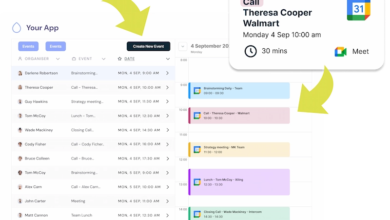How to Switch Careers Smoothly Without Starting From Zero

Career switches feel terrifying because we think we’re throwing away years of experience to become beginners again. But that’s not how smart career transitions work.
The professionals who switch successfully don’t start from zero – they find ways to transfer their existing skills into new contexts.
The key is identifying what’s transferable about your background and positioning it strategically.
You’ve got more relevant experience than you realize, even if it’s not obvious at first glance.
Map Your Transferable Skills
Start by listing everything you’ve done well in your current field, not just your job title. If you’ve managed budgets, coordinated projects, solved complex problems, or dealt with difficult customers, those skills translate across industries.
Break down your accomplishments into core competencies. “Increased sales 30%” becomes “data analysis and performance optimization.” “Managed a team of 12” becomes “leadership and people development.” These underlying skills are what employers actually care about.
Look for patterns in what you’ve enjoyed most and excelled at. Often, the skills that energize you in your current role are exactly what you should emphasize in your new field.
See also; How Smart Home Technology Is Redefining Interior Design
Research Your Target Industry Deeply
Understanding your target industry’s language, priorities, and pain points is crucial. Read industry publications, follow thought leaders on LinkedIn, and join professional groups. You need to speak their language and understand their challenges.
Pay attention to how different industries describe similar work. What marketing calls “customer segmentation,” healthcare might call “patient populations,” and finance might call “risk categories.” Same concept, different terminology.
Identify the biggest problems your target industry faces.
How could your background help solve them?
This becomes the foundation of your positioning strategy.
Build Bridges Before You Jump
Start building connections in your target field while you’re still employed. Attend industry events, join professional associations, and reach out to people doing jobs you want.
Most professionals are surprisingly willing to share insights if you approach them respectfully.
Volunteer for projects that involve your target industry or take on side work that gives you relevant experience. This helps you build credibility and test whether you actually enjoy the work before making a full commitment.
Look for ways to collaborate with people in your target field through your current role. These relationships can become valuable sources of advice and potential opportunities.
Position Your Story Strategically
Your career switch story needs to make logical sense to hiring managers. They need to understand why you’re changing careers and why your background makes you valuable, not risky.
Focus on the logical progression rather than dramatic change. “I’ve always been interested in helping businesses improve operations” connects your manufacturing background to business consulting better than “I got tired of manufacturing and want to try something new.”
Platforms like Higher Hire can help you understand how to position career transitions effectively and connect with employers who value diverse backgrounds.
Emphasize what you’re bringing to the role, not what you lack. Instead of saying “I don’t have direct experience in software sales,” say “My manufacturing background gives me deep insight into how operations teams evaluate technology purchases.”
Start With Stepping Stone Roles
Perfect career transitions rarely happen in one jump. Look for roles that bridge your current field and your target destination. These stepping-stone positions let you gain industry experience while leveraging your existing skills.
If you want to move from finance to marketing, consider business development roles that require financial analysis skills.
If you want to switch from education to corporate training, look for learning and development positions that value your teaching background.
Invest in Strategic Skill Development
Identify the 2-3 most important skills gaps between your background and your target role. Focus your learning efforts there rather than trying to become an expert in everything.
Choose learning opportunities that give you tangible credentials or portfolio pieces. Online certifications, project-based courses, or freelance work in your target field all provide evidence of your commitment and competence.
Leverage Your Unique Perspective
Your outsider perspective can be an advantage, not a liability. You see things differently than people who’ve been in the industry forever. That fresh viewpoint can lead to innovative solutions and approaches.
Many successful career switchers become valuable precisely because they bring different thinking to old problems.
Don’t try to hide your background – use it strategically to differentiate yourself from traditional candidates.
The most successful career transitions happen when you can clearly articulate why your unique combination of skills and perspective makes you valuable in your new field.




